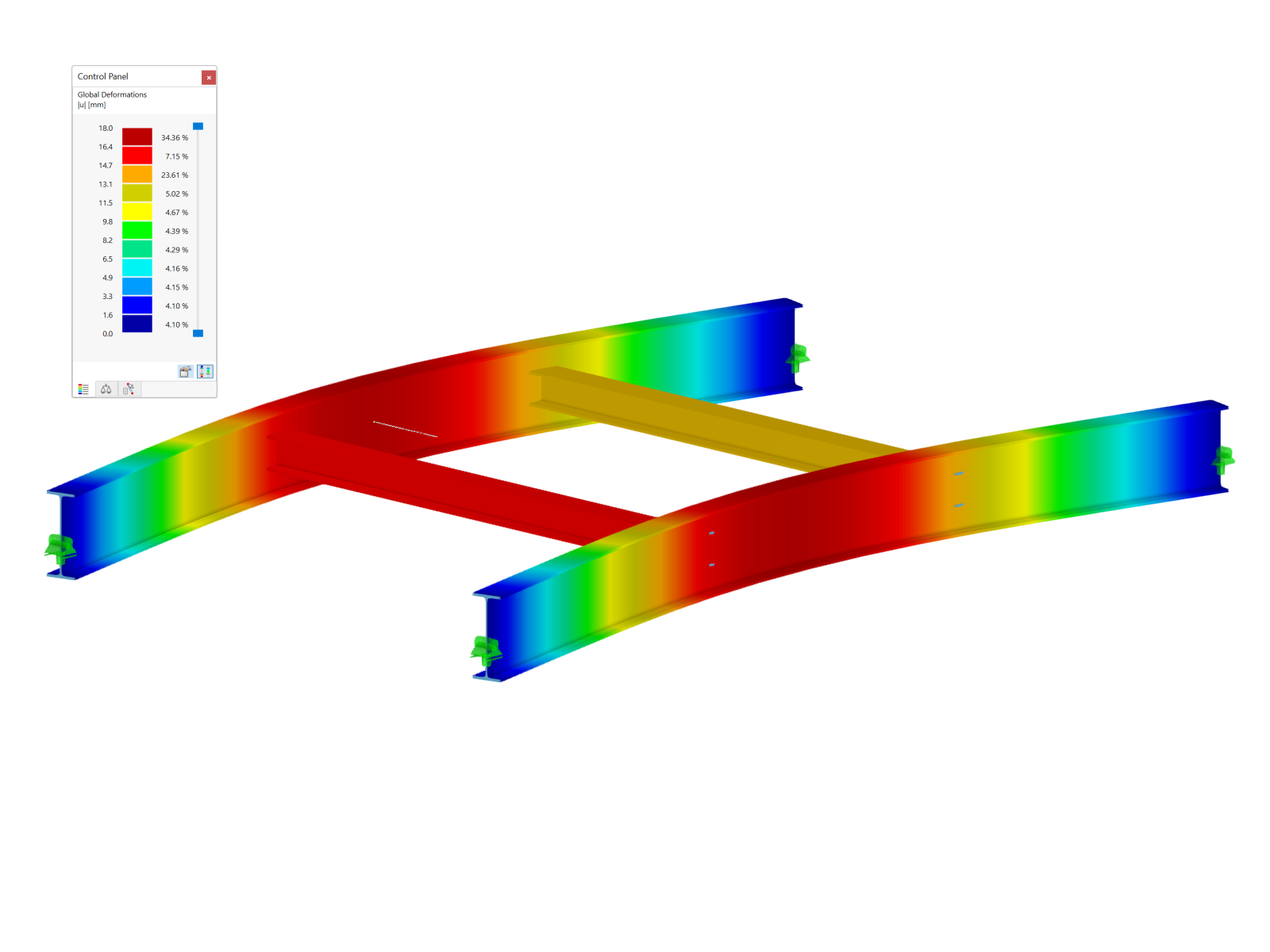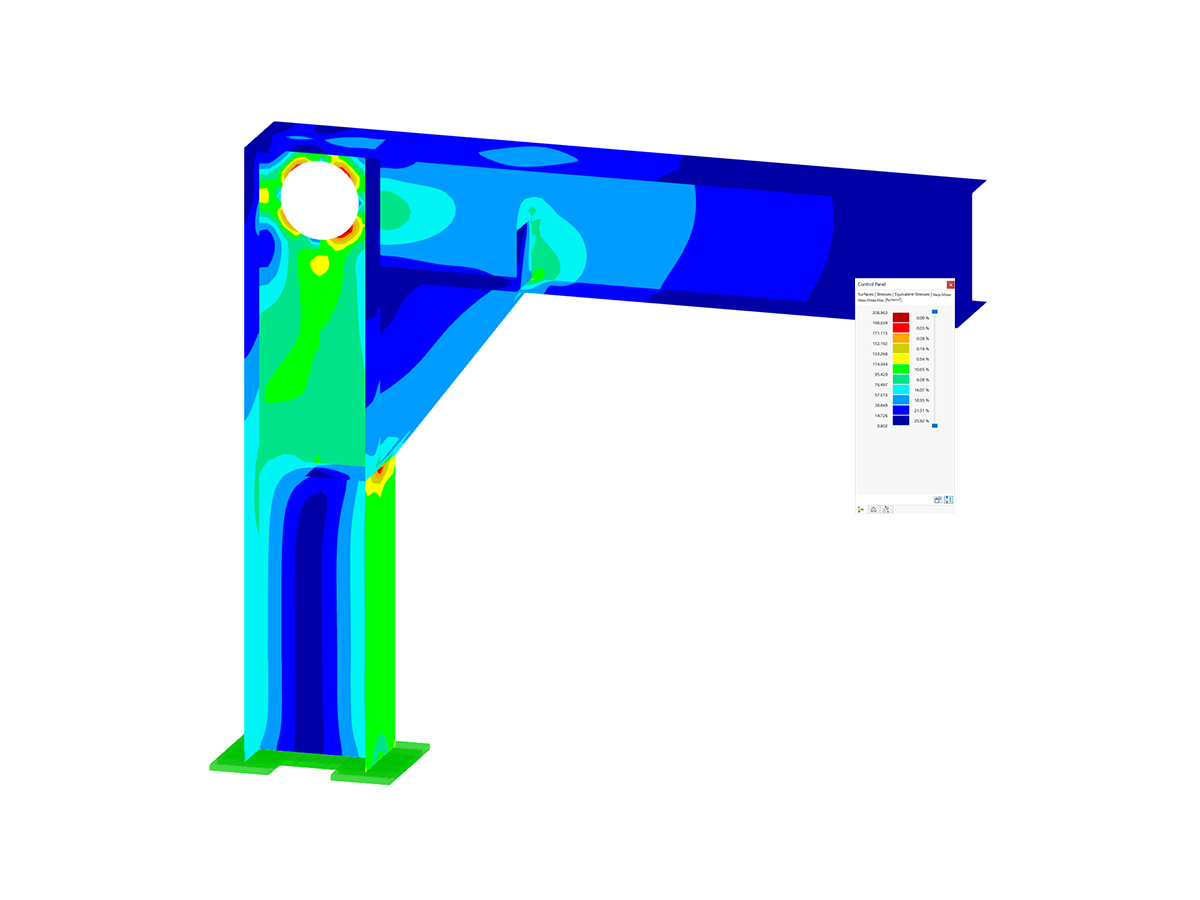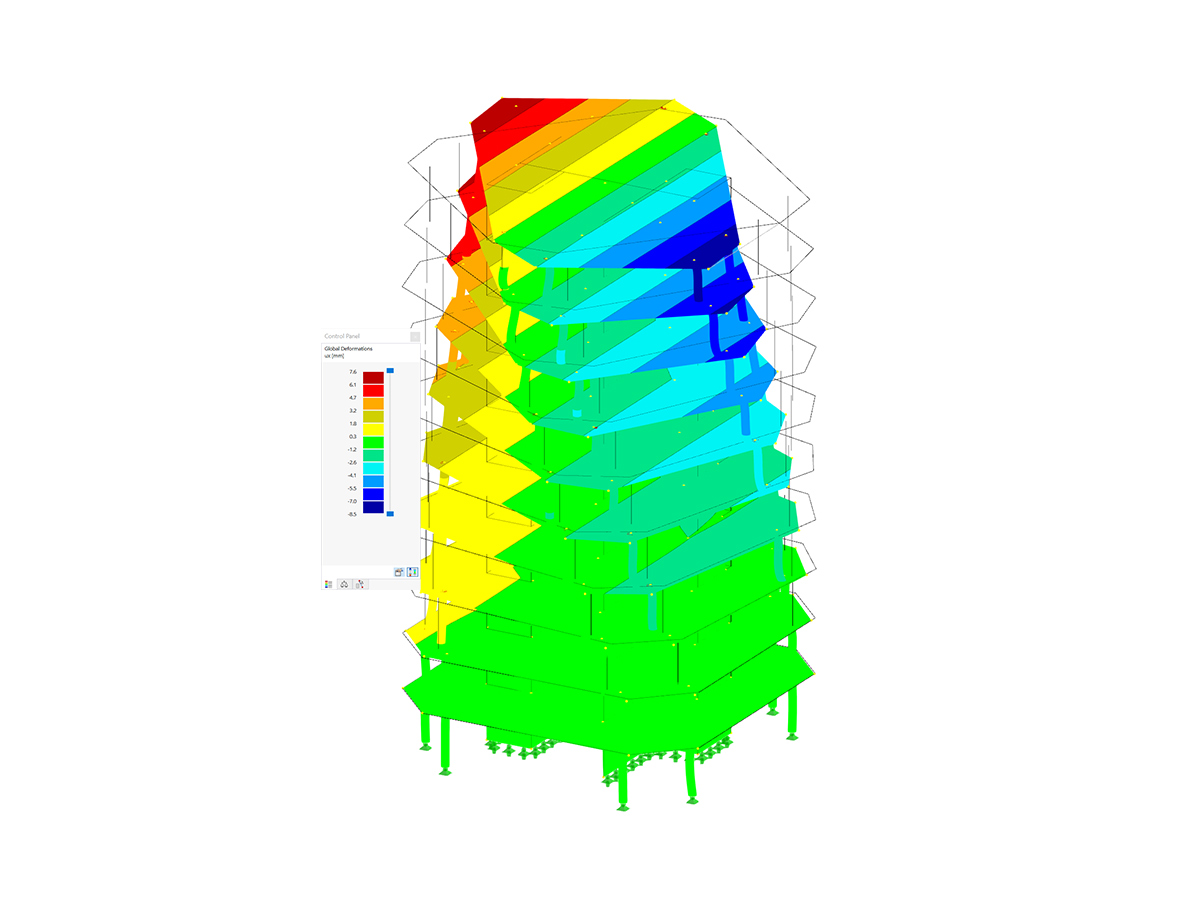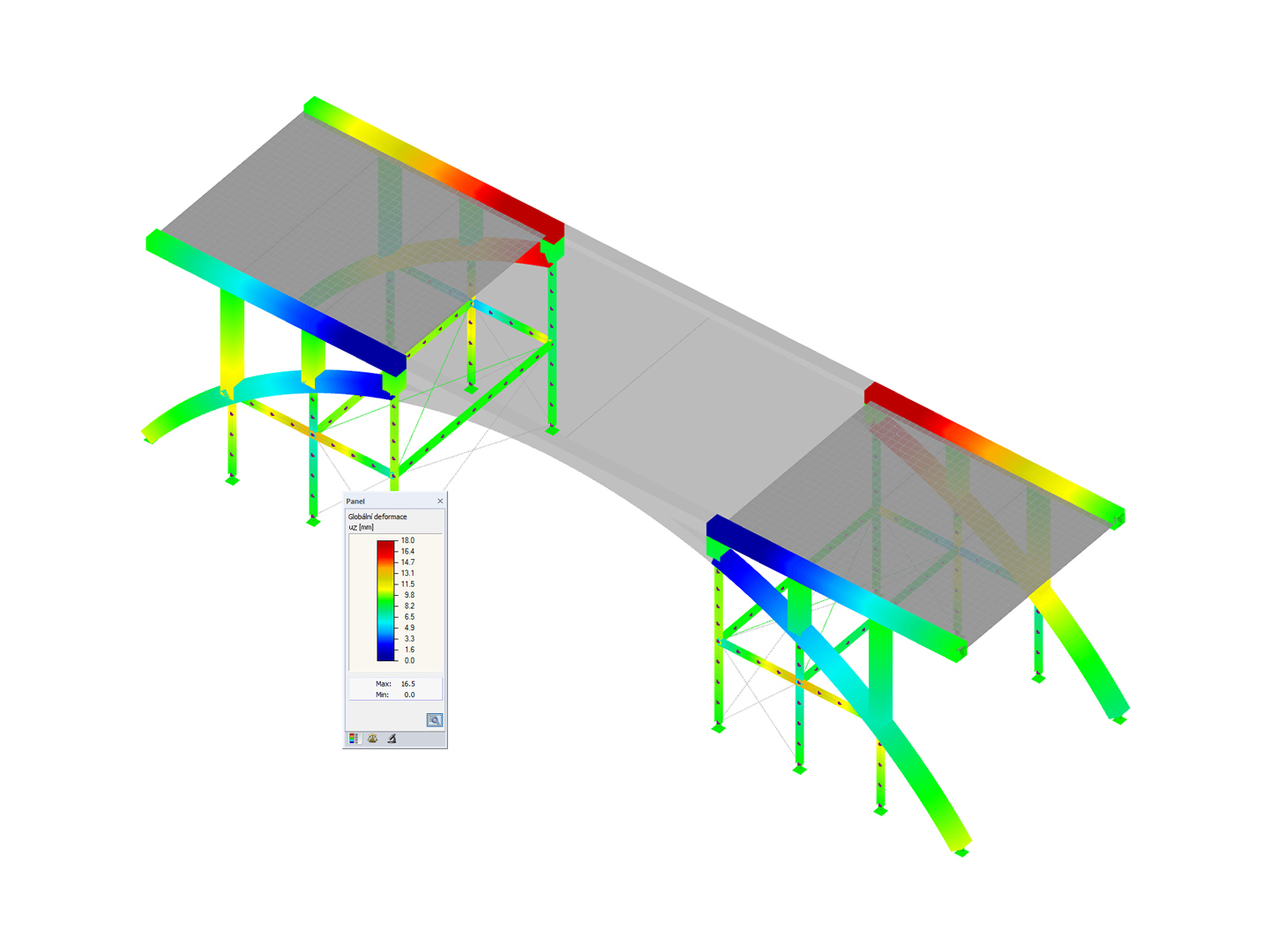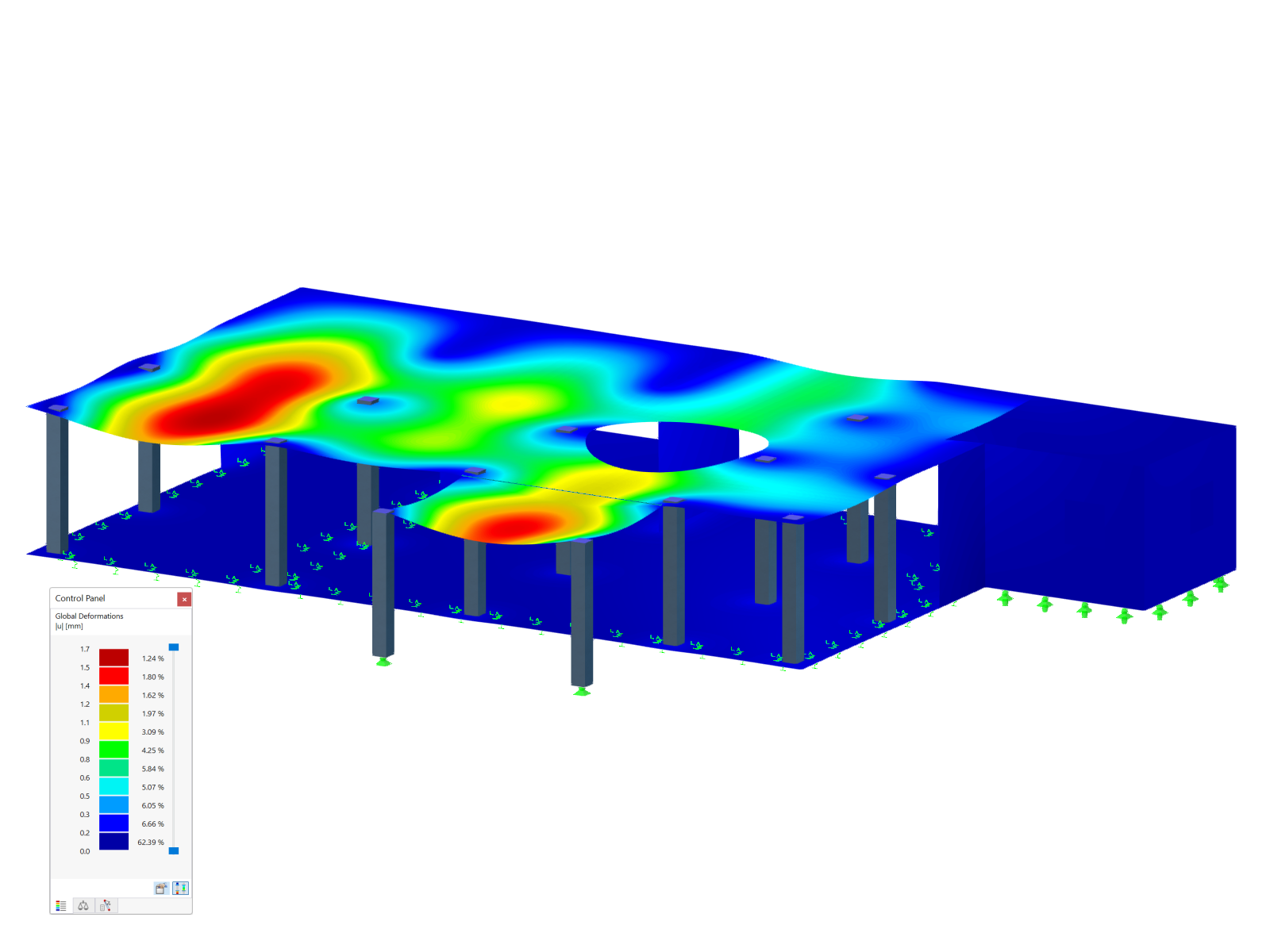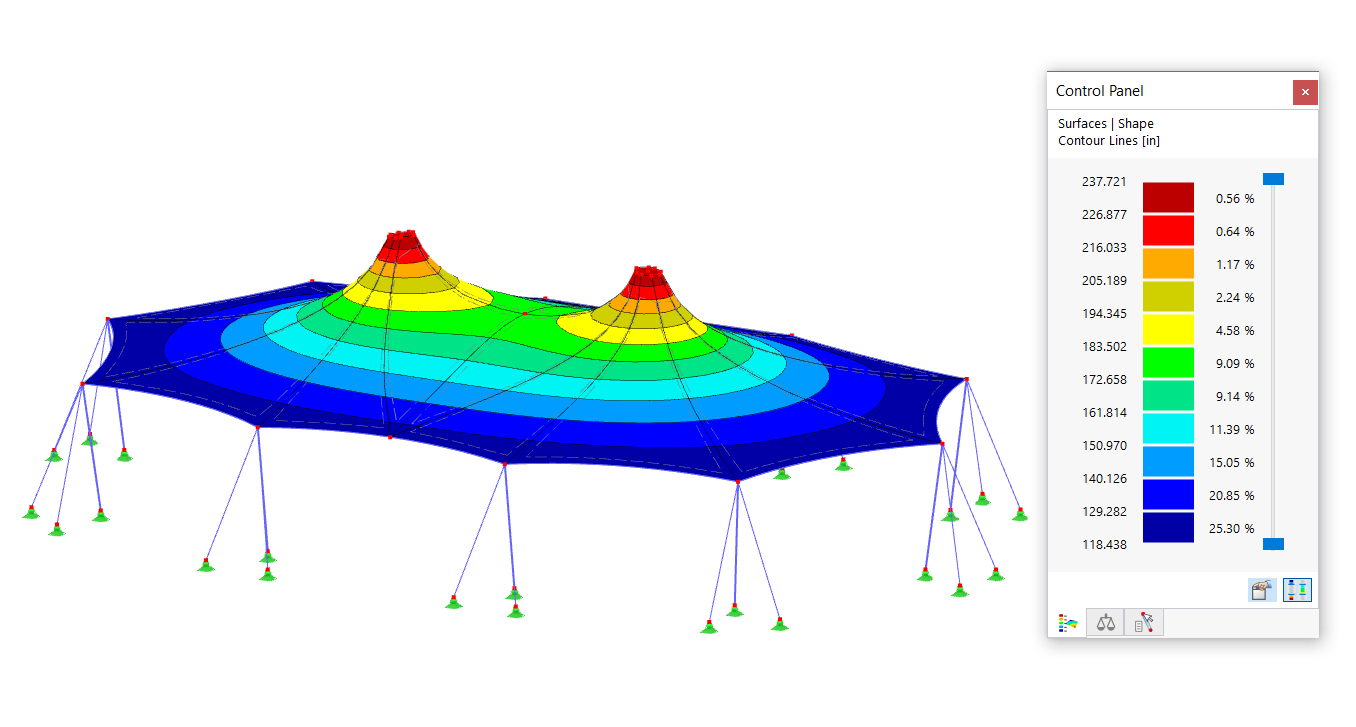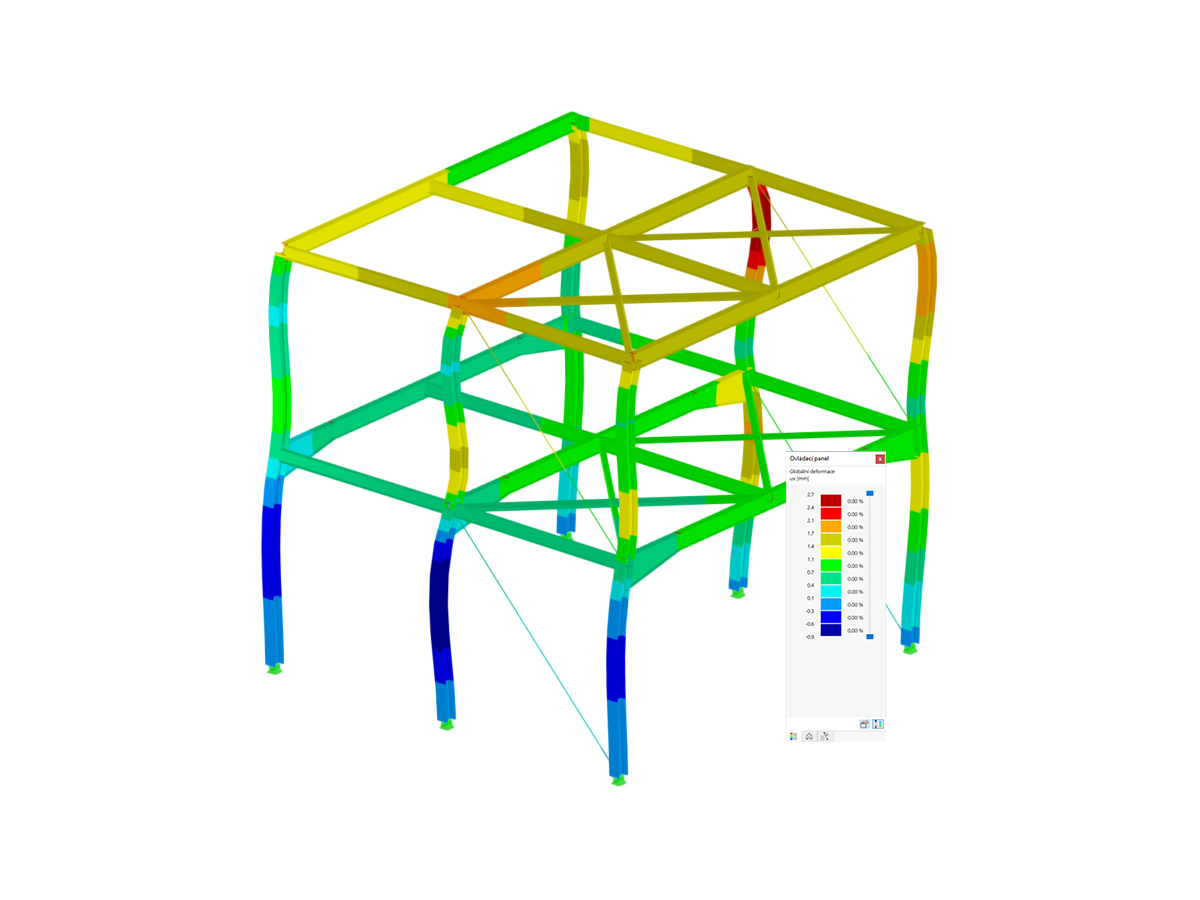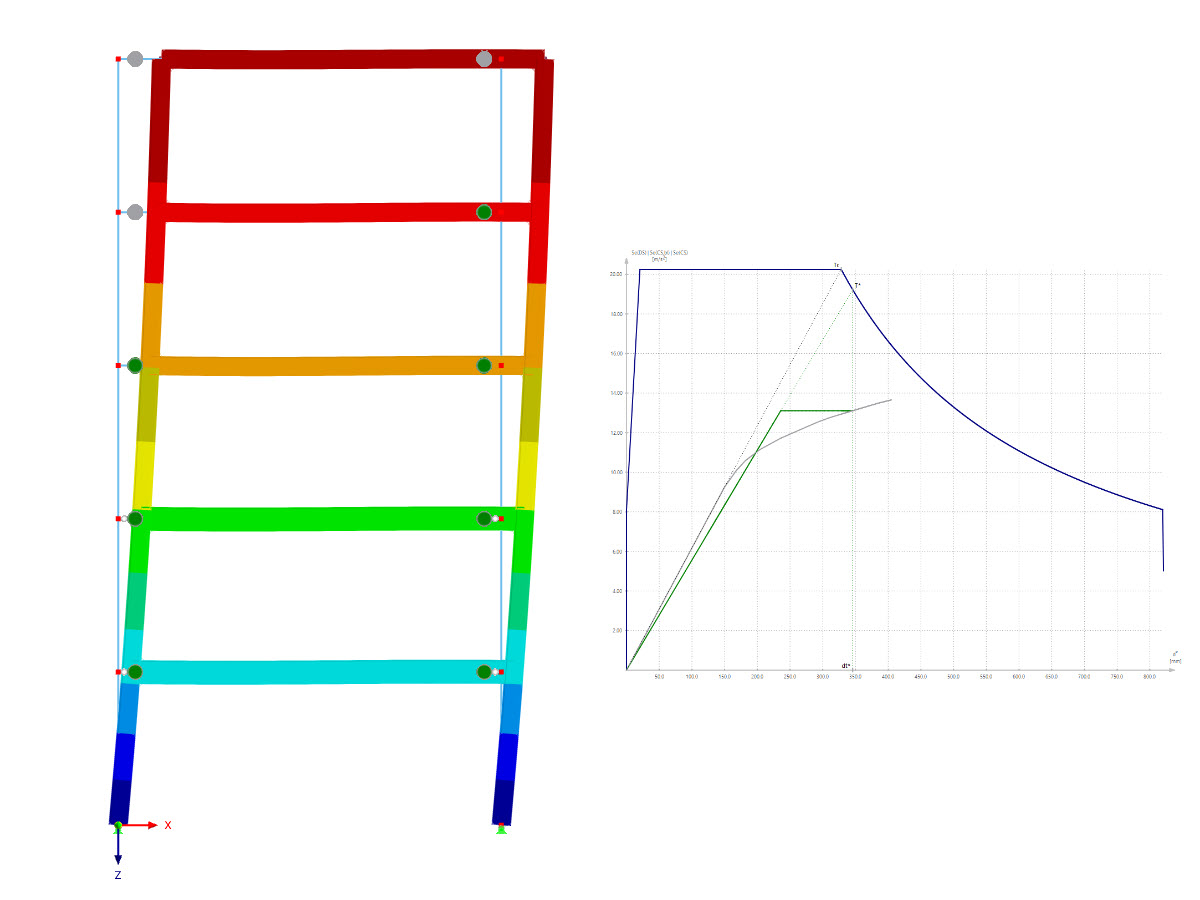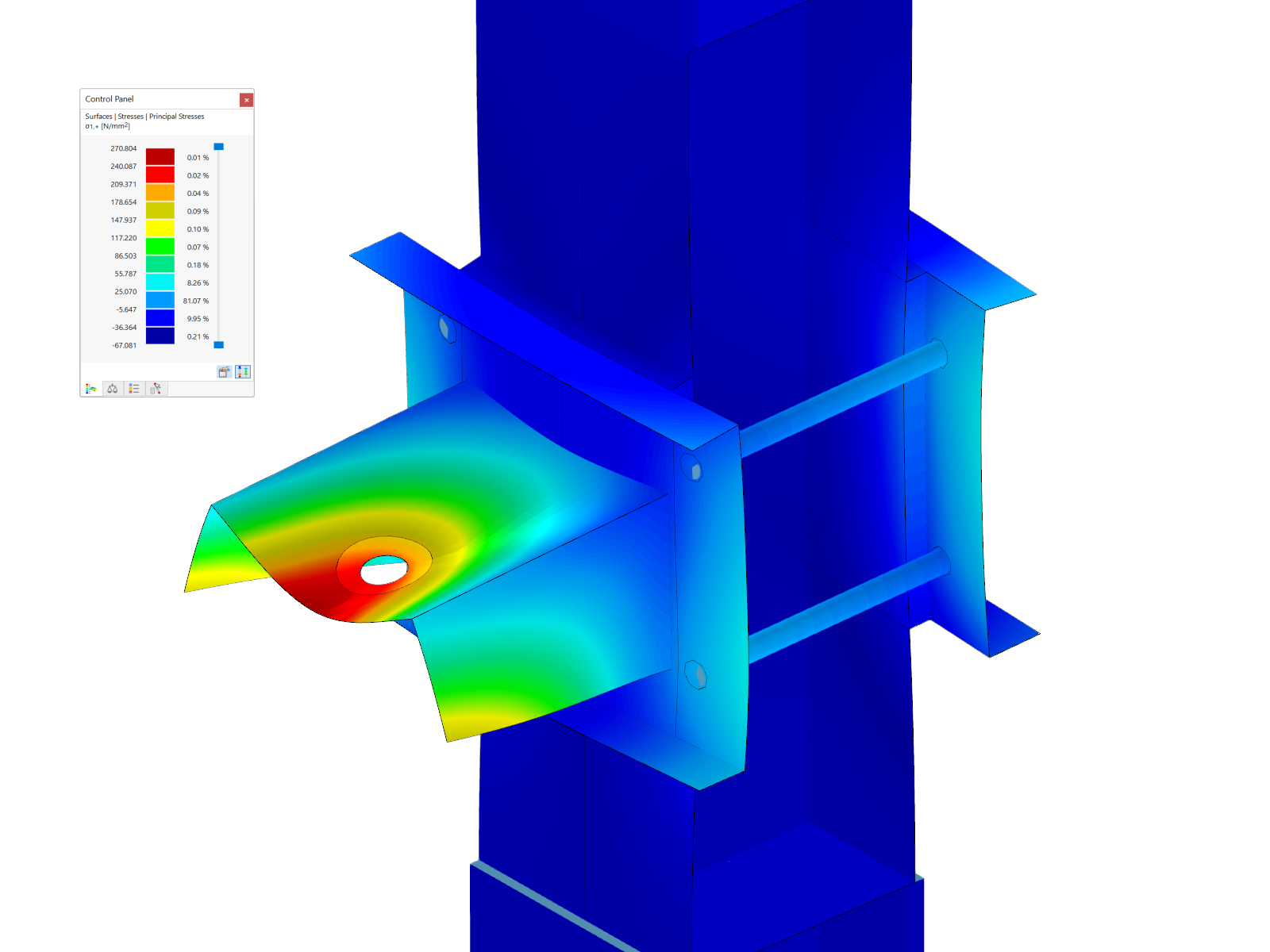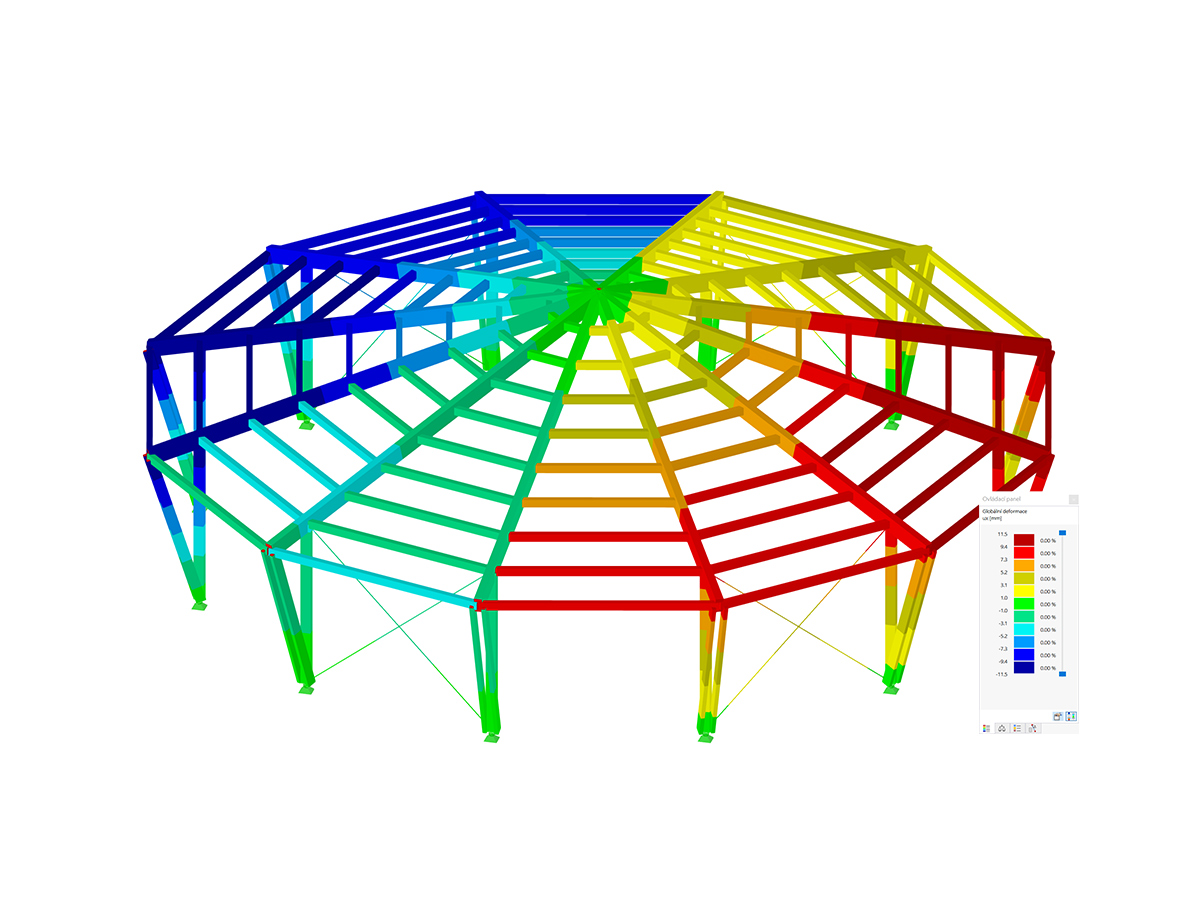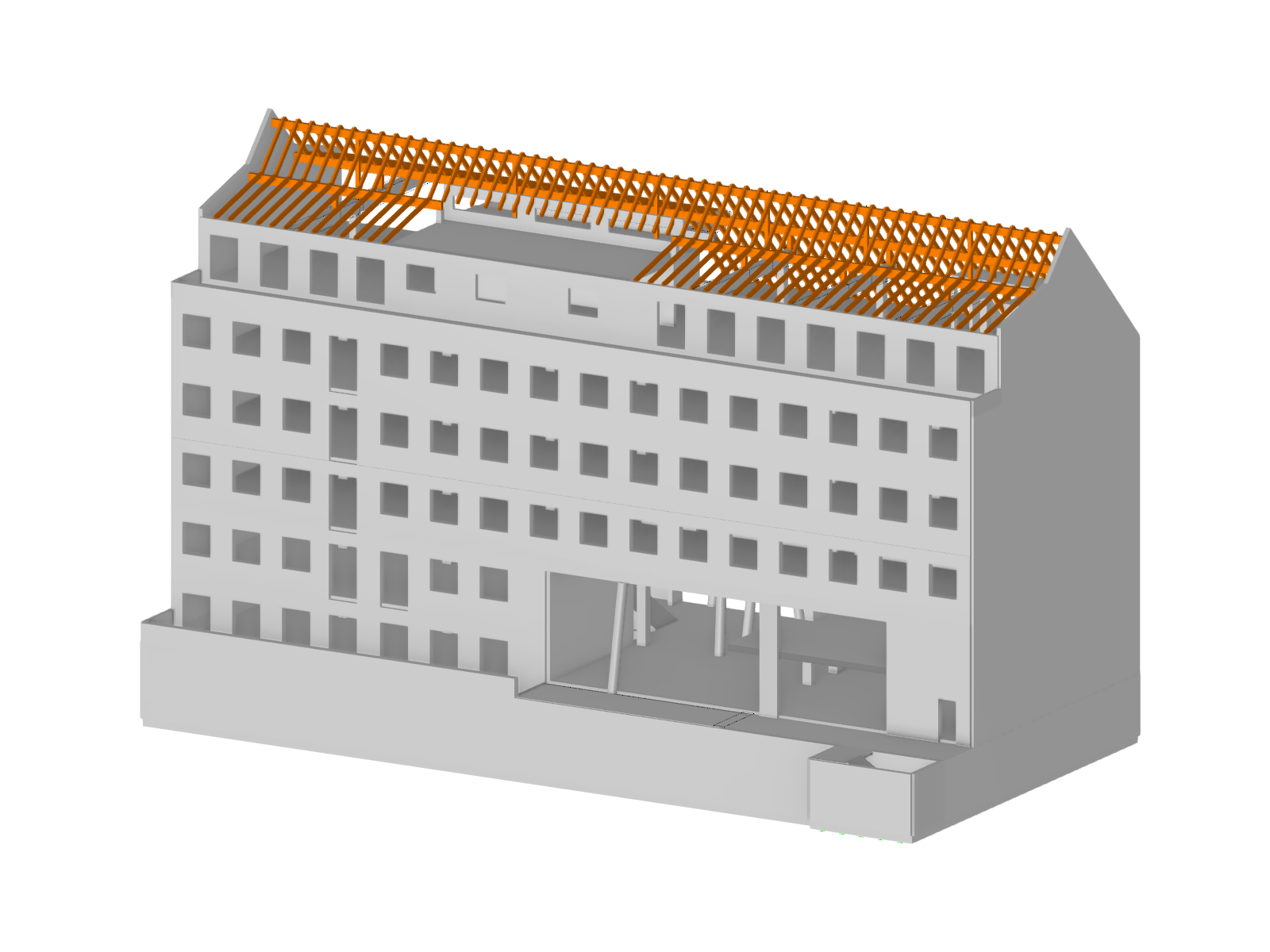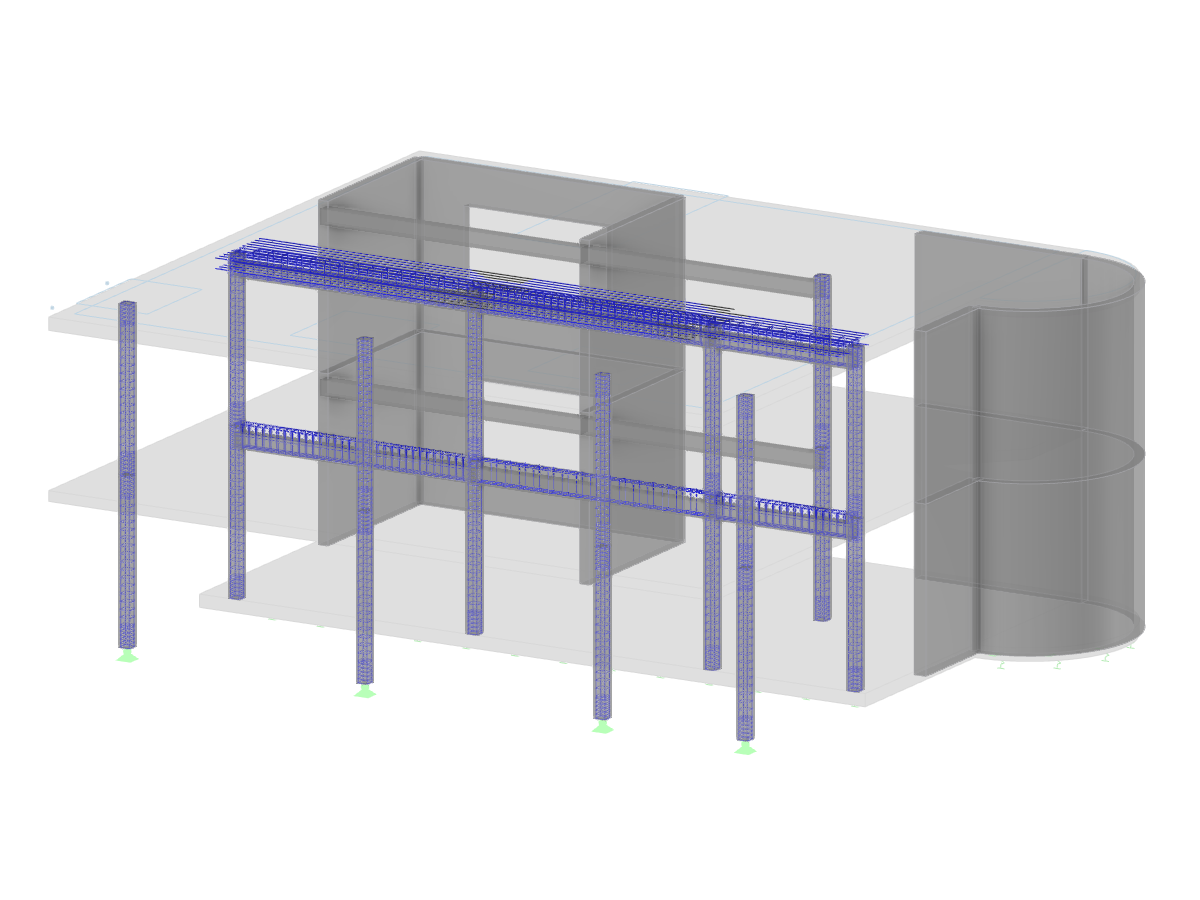This model shows a spatial truss girder that was created as a truss structure with a closed circular cross-section. The precise geometric display in 3D format allows for detailed observations of the structural element connections. The visual rendering presents clearly defined curves and section edges, which contribute to a clear structural view. The integrated model visualization supports the analysis of complex truss components in structural design.
| 5 star | ||
| 4 star | ||
| 3 star | ||
| 2 star | ||
| 1 star |
Truss Girder with Circular Sections
| Number of Nodes | 48 |
| Number of Lines | 90 |
| Number of Members | 90 |
| Number of Load Cases | 2 |
| Number of Load Combinations | 2 |
| Number of Result Combinations | 1 |
| Total Weight | 1.380 t |
| Dimensions (Metric) | 14.112 x 1.813 x 1.813 m |
| Dimensions (Imperial) | 46.3 x 5.95 x 5.95 feet |
| Program Version | 5.23.02 |
You can download this structural model to use it for training purposes or for your projects. However, we do not assume any guarantee or liability for the accuracy or completeness of the model.

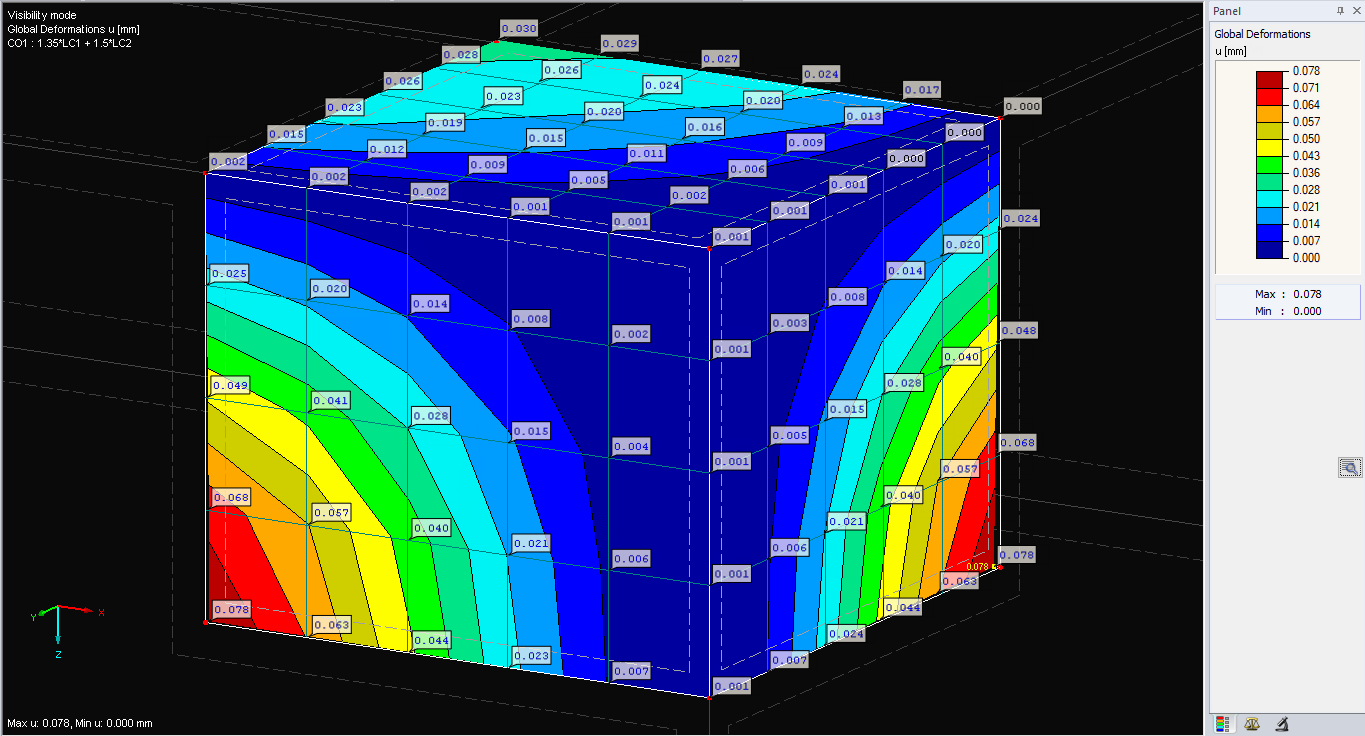
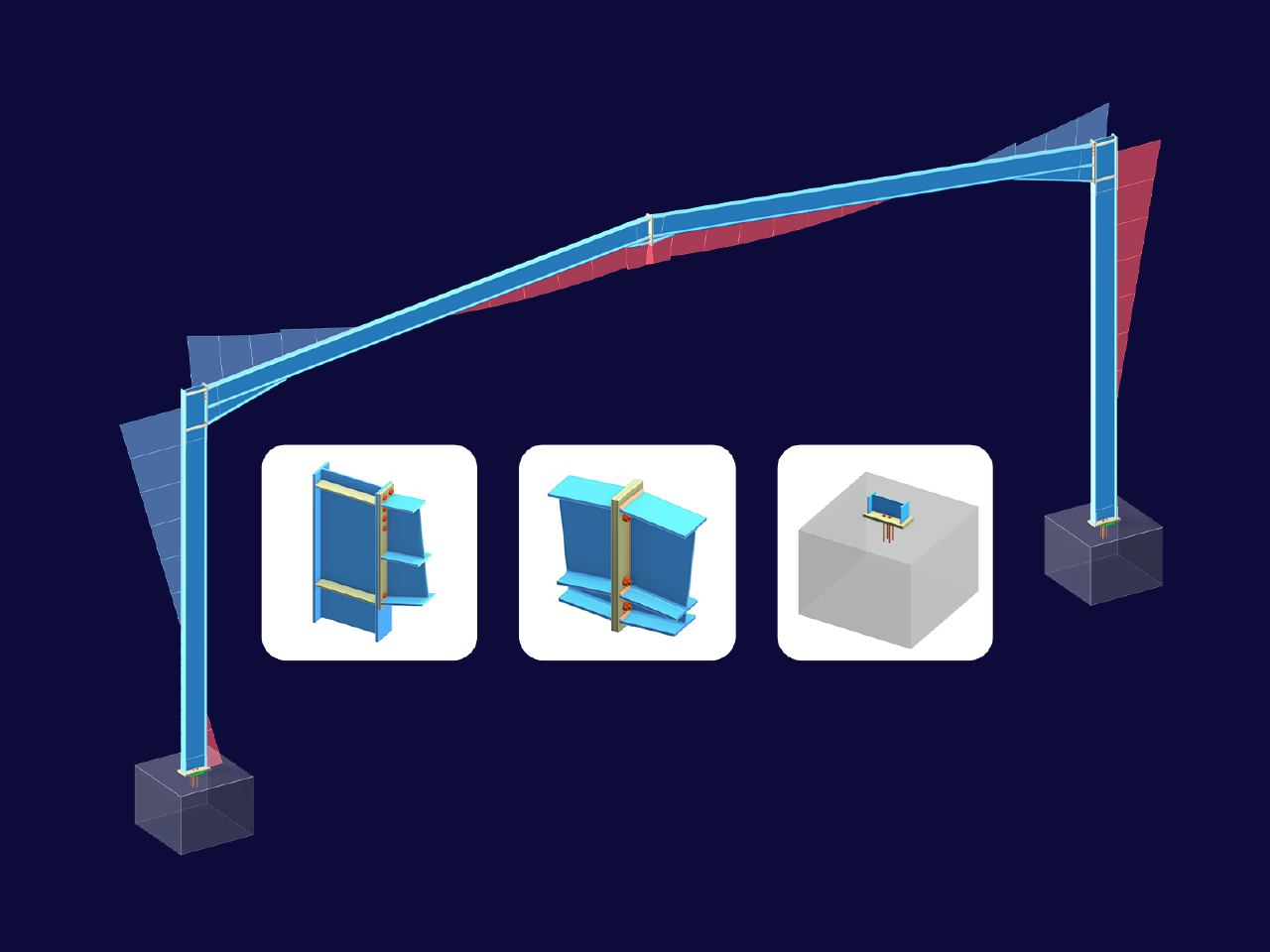
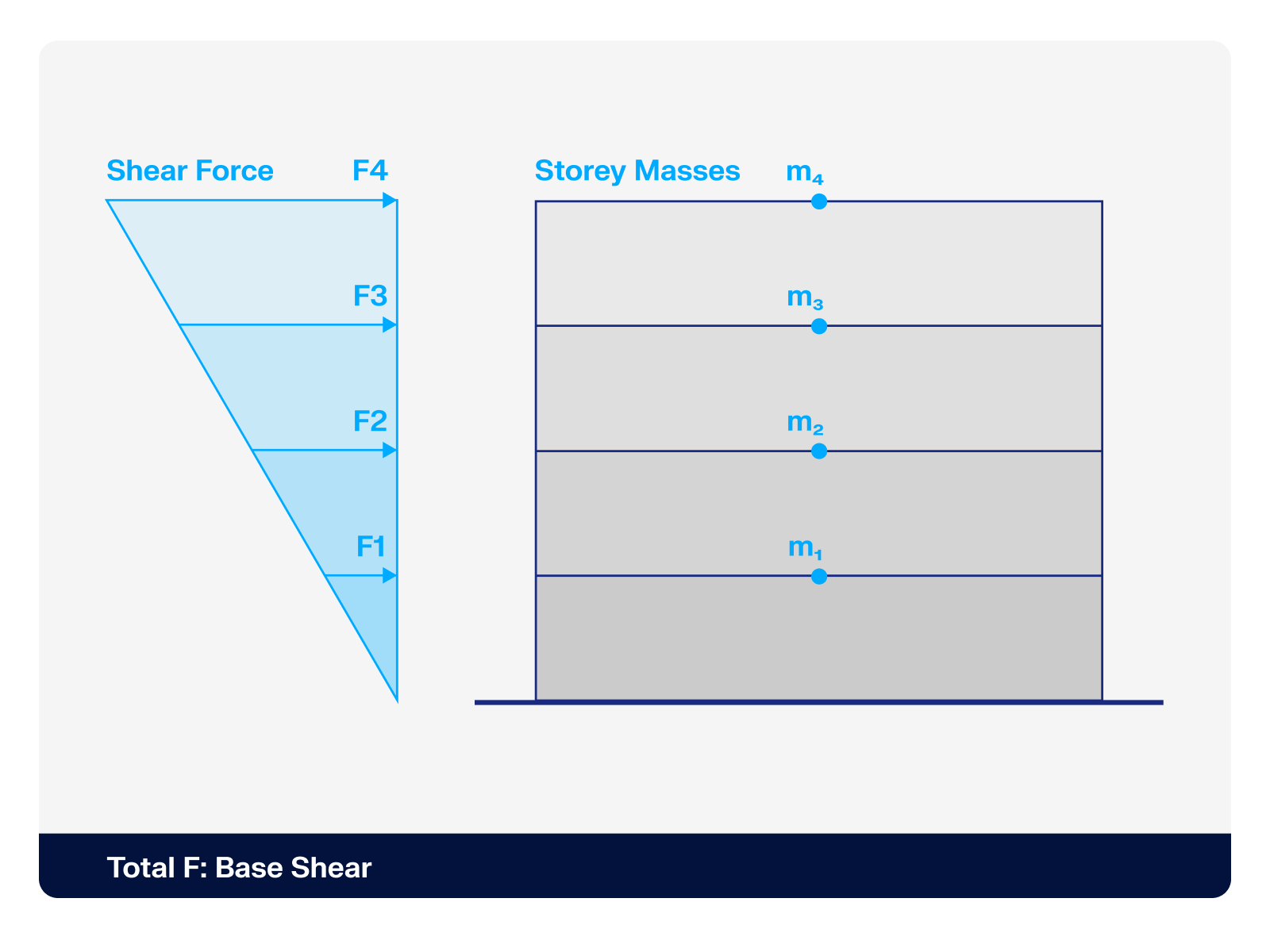.png?mw=512&hash=4a84cbc5b1eacf1afb4217e8e43c5cb50ed8d827)
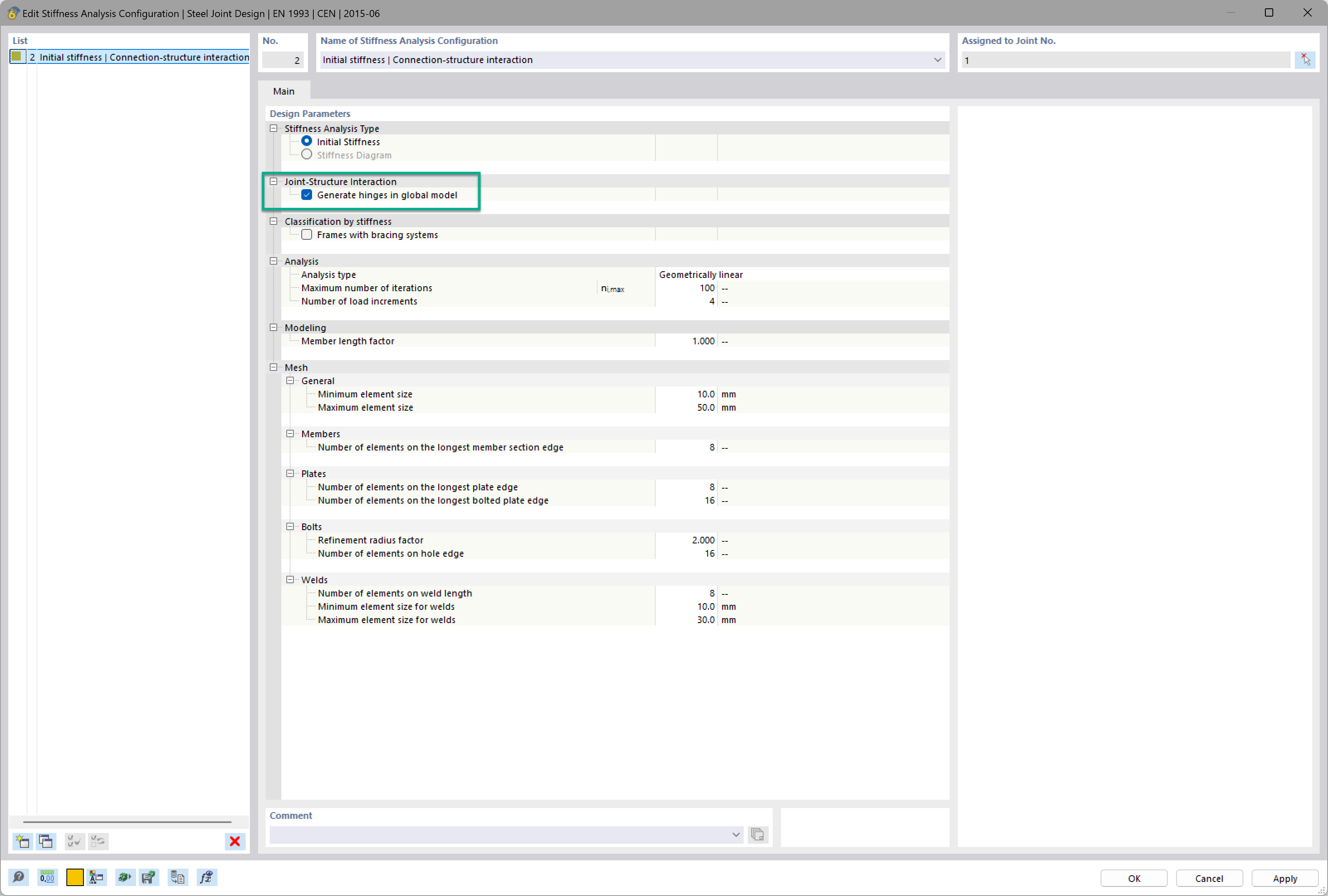
Want to automatically consider steel joint stiffness in your global RFEM model? Utilize the Steel Joints add-on!
Activate joint-structure interaction in the stiffness analysis of your steel joints. Hinges with springs are then automatically generated in the global model and included in subsequent calculations.
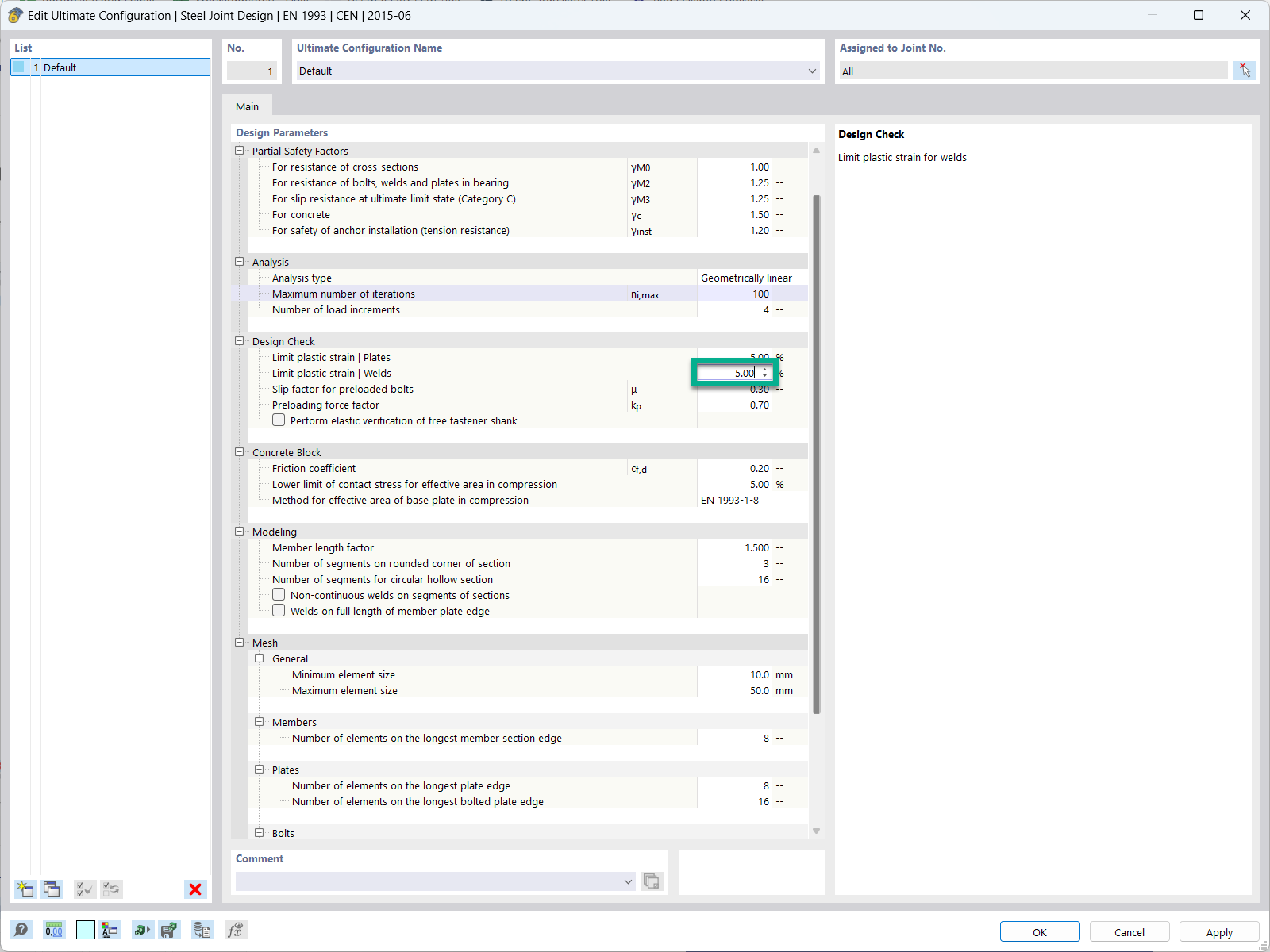
In the ultimate configuration of the steel joint design, you have the option to modify the limit plastic strain for welds.
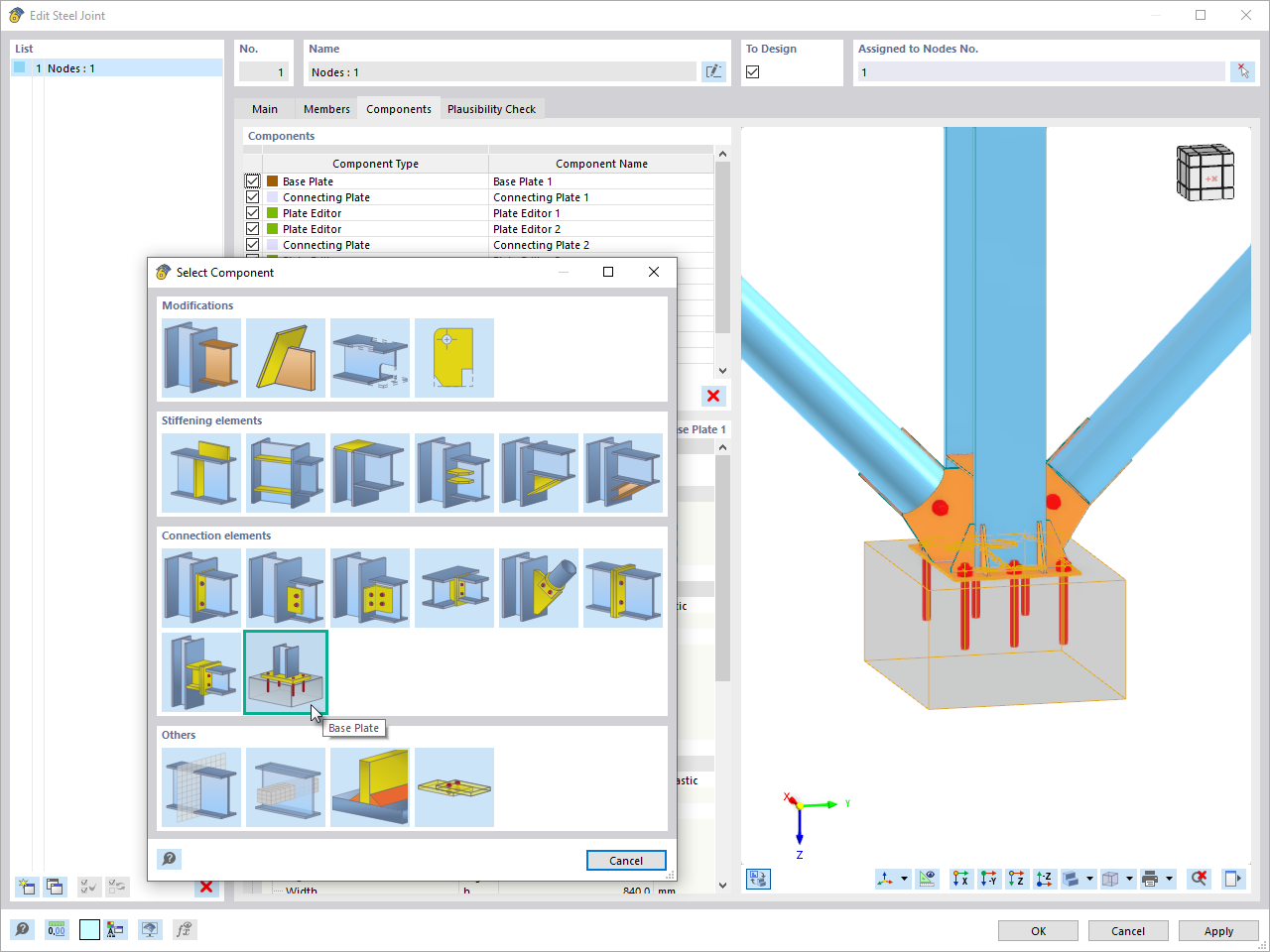
The "Base Plate" component allows you to design base plate connections with cast-in anchors. In this case, plates, welds, anchorages, and steel-concrete interaction are analyzed.
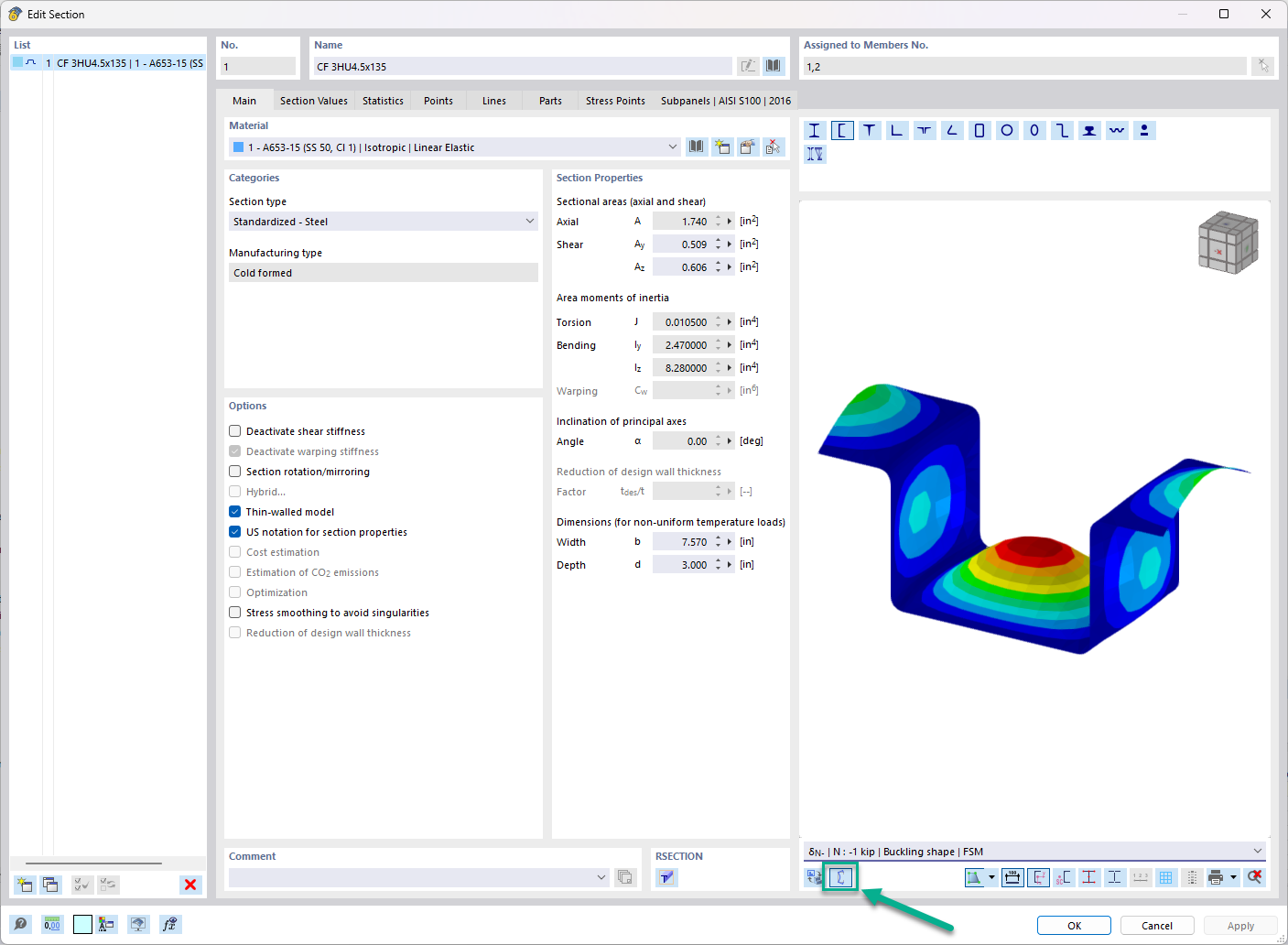
In the "Edit Section" dialog box, you can display the buckling shapes of the Finite Strip Method (FSM) as a 3D graphic.





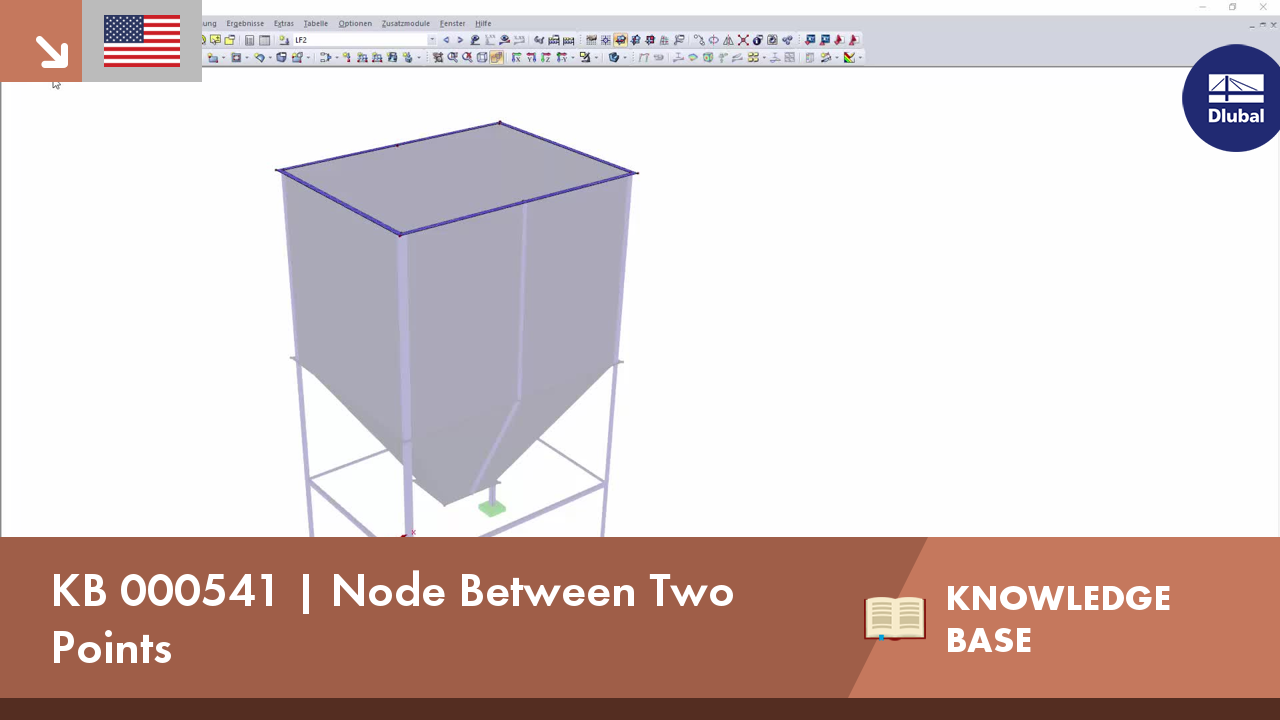













Prof._Dr.-Ing._G._Nonhoff__LI.jpg?mw=350&hash=3352d710a6bc7f4fed3f07a280a700972f70f6aa)















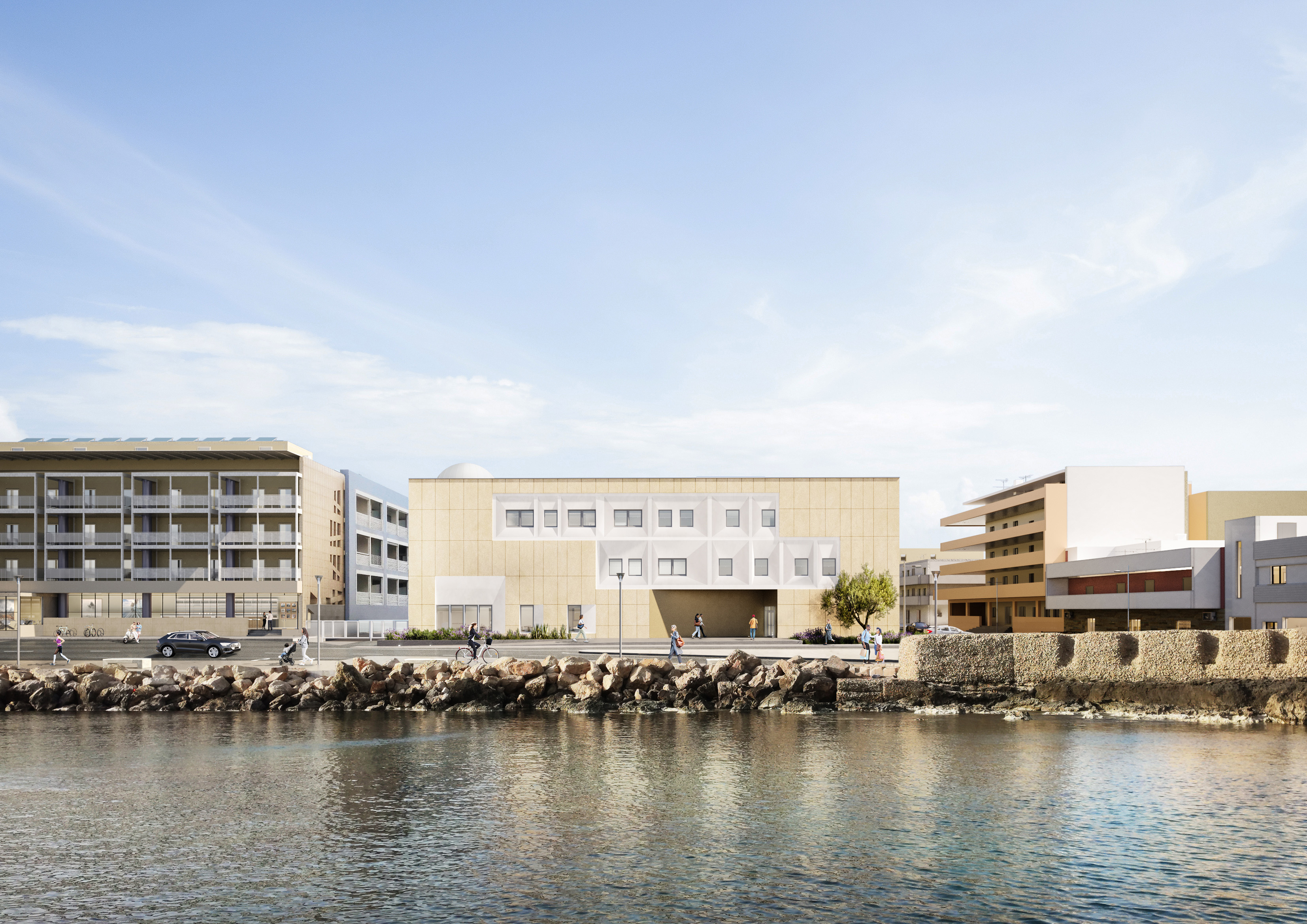_1.jpg?mw=350&hash=ab2086621f4e50c8c8fb8f3c211a22bc246e0552)




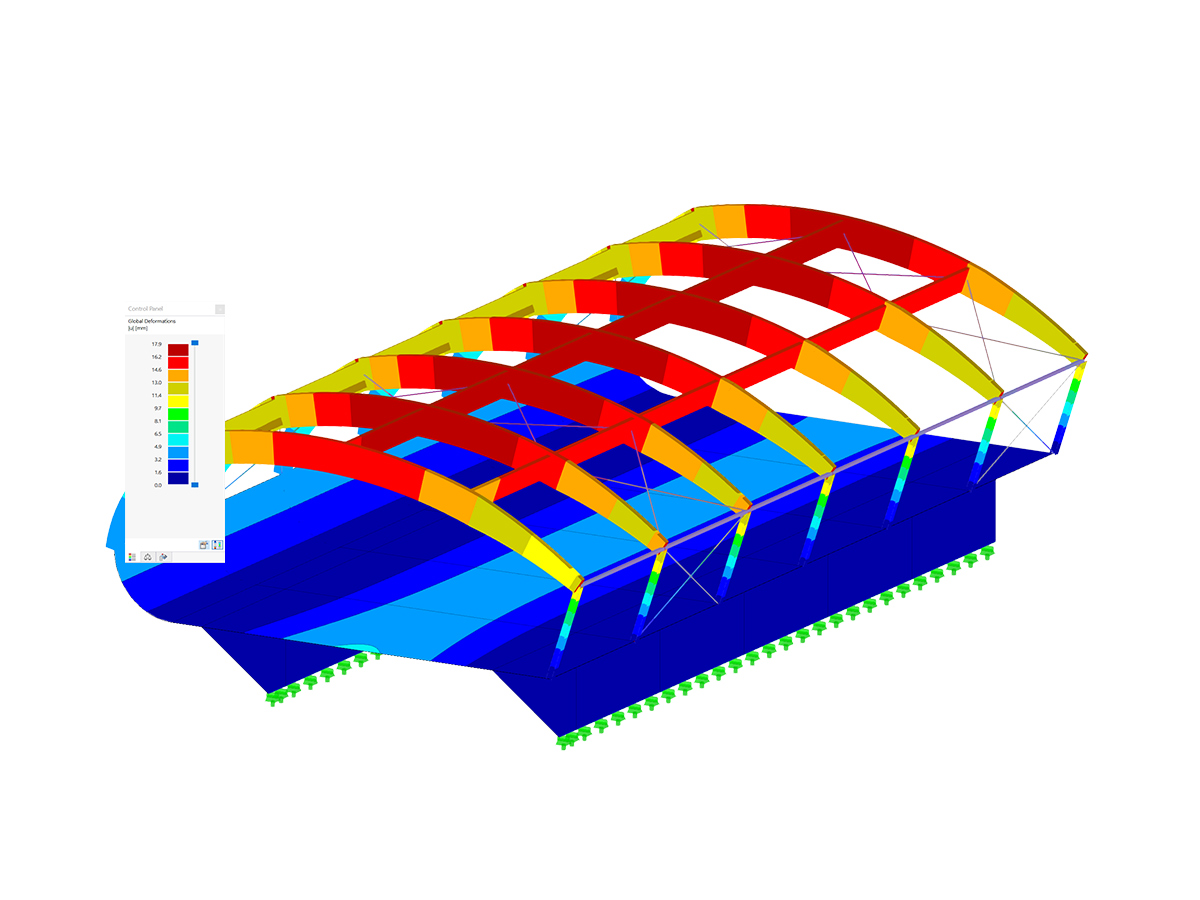
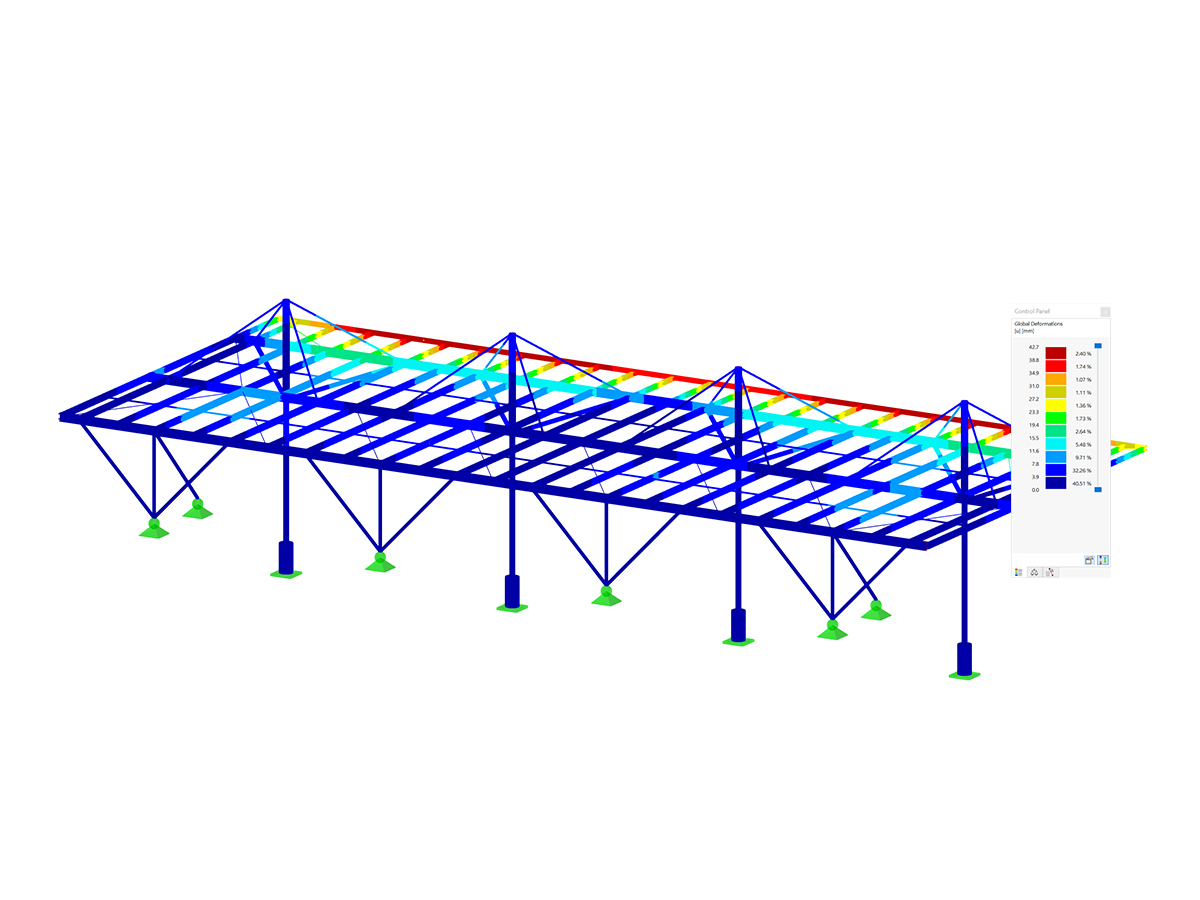
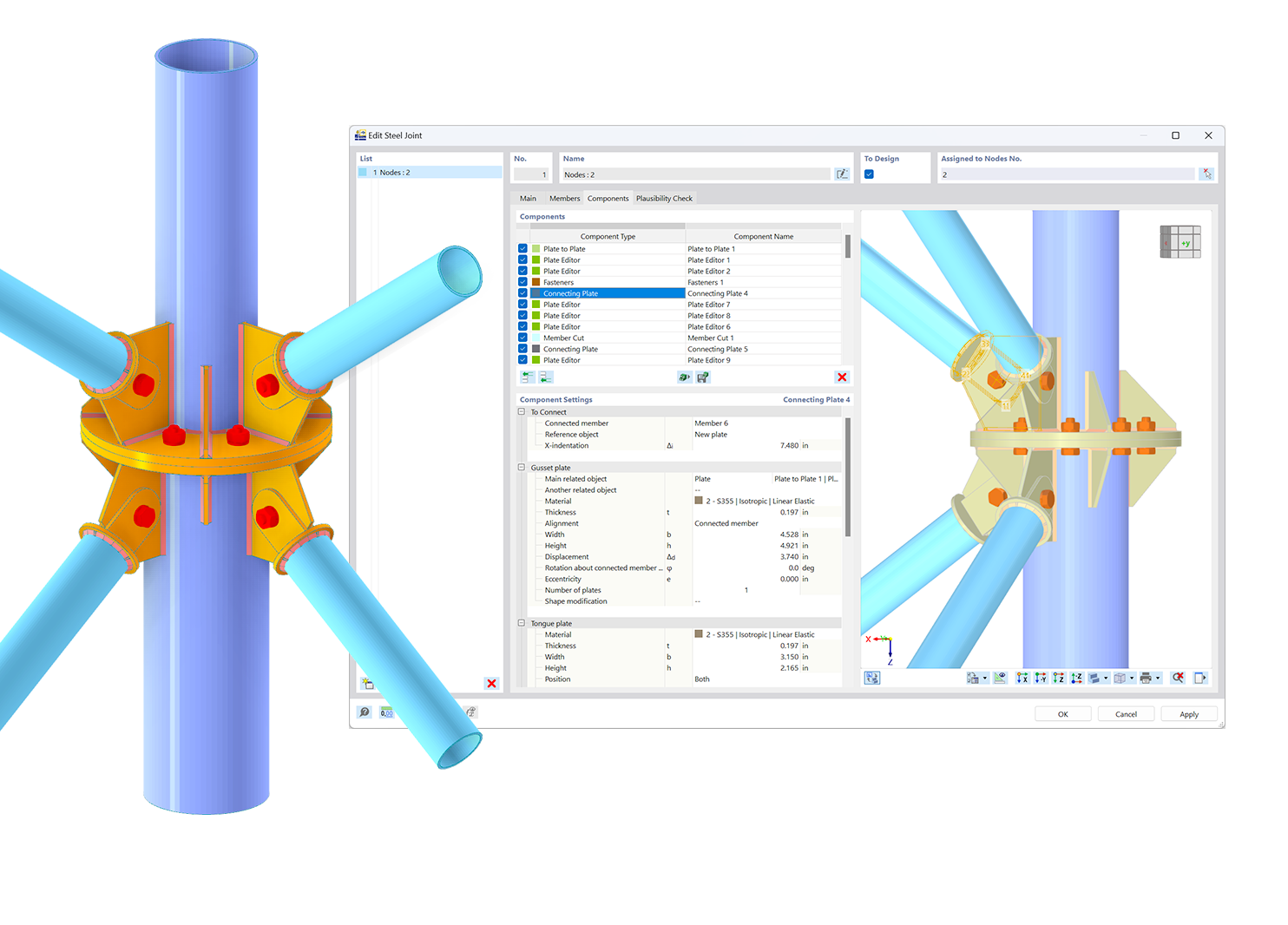.png?mw=600&hash=49b6a289915d28aa461360f7308b092631b1446e)
